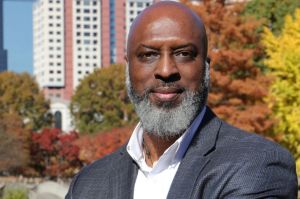Colleges Across U.S. Impose Smoking Ban on Campuses
Over 500 colleges across the country have created a smoking ban on college campuses.
Increasingly, colleges around the country are instituting policies that create 100 percent smoke-free environments.
The new smoking-ban trend started in the early 2000s. The first school that enacted the ban was Ozarks Technical Community College in Springfield, Missouri.
The former Vice President of Student Affairs at Ozarks, Ty Patterson, recalled to CNN when he realized something had to be done about campus smoking.
He said, “The president came to me and said, ‘Ty, we’ve got problems. You can’t get in and out of doorways without going through a corridor of smoke.’ “
Patterson then developed a policy that has now been used to help over 500 college campuses transition to smoke-free environments.
The exact parameters of the smoke-free environments vary from school to school. Generally anti-smoking policies prohibit smoking on campus grounds, athletic stadiums, restaurants, and parking lots.
For students of Massachusetts’s Bridgewater State University and Salem State University, the latest schools to enact the ban, smokers will be unable to light a cigarette anywhere on campus grounds including lawns, parking lots, and sidewalks.
Bridgewater and Salem are adding to the list of other Massachusetts schools that have already banned smoking on campuses. Other schools in the state include Massachusetts Maritime Academy and Bristol and Cape Cod community colleges. The University of Massachusetts-Amherst will be joining the ranks of these schools by 2013.
In Massachusetts, state law prohibits smoking in any state-owned buildings, including dorms, libraries, and classrooms at public universities.
Some worry that the ban might cause some student smokers to smoke inside, where smoking is prohibited as well.
Salem State University decided to go through will the ban following a survey sent out to 11,000 students and faculty about smoking. The school only got 1,200 responses, 40 percent of which did not agree with the initiating of stronger smoking rules on campus. Nevertheless, the responses of students that wanted a ban were powerful enough to push the administration towards creating a smoke free campus.
At the University of Kentucky, a smoking-ban on campus was enacted on July 1st and students and staff have been patrolling campus grounds as volunteers for the Tobacco-free Take Action Coalition.
The volunteers approach smokers and provide them information about how to quit smoking and inform them of resources available on campus to help students break the habit. They also ask students to dispose of their cigarettes while they are smoking.
The smoking-ban trend seems to be picking up. American Nonsmoker’s Right Foundation Project Manager Liz Williams, told CNN that in the past year alone, 120 campuses have adopted non-smoking policies.
However, according to the Centers for Disease Control and Prevention, 21.8 percent of adults aged 18-24 years smoke, while out of adults aged 25-44 years 24 percent smoke. Of them, only 11.1 percent of adults with an undergraduate degree smoke.
Nevertheless, smoking bans have elicited a response from disappointed students opposed to the smoking bans at their colleges and the students have employed several measures in an attempt to dismantle the smoke-free policies.
In one such case, students at Arizona State made a Facebook page entitled, "10,00 ASU Students Against the Smoking Ban."
One post on the page says, "They are trying to ban smoking again on campus. They tried and failed last year. The students and the council spoke. They support smoking zones, not fascism."





























